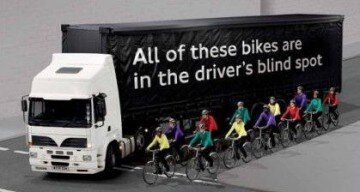STA Newsletter
Issue # October 2016
A bi-monthly online journal providing news and background about activities undertaken by STA with a view to improving the methods, technologies and standards associated to transportation infrastructures.
The 2016 STA Technical Roundtable took place in Brussels (Belgium) on 25 October 2016
25 October 2016
The event counted on 20 high-level speakers at the forefront of Transportation Infrastructure Innovation, and attracted experts from private industry, academia and public authorities in the framework of lively debates on the right strategies to attain the Smart Transportation Infrastructures of the Future.
More on the Roundtable - including full conference proceedings - can be found at the Events section.
'Variations on a theme': launching the Spanish Thematic Network on Intelligent Vehicles (RETEVI)
7 October 2016
C-ITS cooperative systems can be rightfully considered as catalysts in the current boom connected to the development and deployment of autonomous vehicles. In addition, C-ITS should not be regarded as independent, unconnected actions, as they add perception and decision elements supported by communications leading us to cooperative autonomous driving.
With the above in mind, a Thematic Network on Intelligent Vehicles (RETEVI) has been launched with the support of the Spanish Ministry of Economy and Competitiveness. This national network is led by the University Institute for Automobile Research (INSIA) of the Technical University of Madrid (UPM) and regroups a large set of research groups active in the transport systems and intelligent vehicles.
This article is entitled 'Variations on a theme' and was published in Thinking Highways - Issue 2, 2016 (Europe and Rest of the World). The authors, Felipe Jiménez, José Manuel Menéndez and José F. Papí, review the objectives of this Network, which include the promotion of research and innovation not only in vehicles, but also in infrastructures.
'Step-Free Mobility: a problem worth solving', a column by STA Chairman José F. Papí
7 October 2016
Stepping on loose flagstones or being raked by head-level barbed wire are our morning stories when we go to work. However, for people with disabilities ordinary travels around European cities are a daunting task. Many wheelchair users end up navigating only a small tranche of familiar local territory as a result, some even confined to a single facility. Some, especially the elderly, have family to help them around obstacles; others have to rely on the unreliable kindness of strangers.
In the Smart City of the Future it will be unacceptable that people with mobility constraints are rarely able leave their home, have incomplete or substandard educations and may never start a family or have meaningful employment.
In this column, featured in Thinking Highways - Issue 2, 2016 (Europe and Rest Of The World), STA Chairman José F. Papí discusses the concept of 'step-free' mobility: a new type of urban mobility servicing non-conventional and vulnerable user groups such as the disabled, the elderly, parents carrying baby strollers, pregnant women, travellers with heavy luggage and so on.
“Sophisticated and innovative procurement should be developed, accompanied by adequate monitoring systems, contracting and tendering methods.”
NEWS OF INTEREST
Polish town tests glowing solar-powered bike path
Polish researchers are testing a new kind of glow-in-the-dark bicycle lane that they hope will help improve the safety of cyclists travelling at night.
The 100-metre-long lane, which was installed in the town of Lidzbark Warmiński late last month, is the first luminous bicycle path Poland.
50 Steps Toward Carbon-Free Transportation
America and the world must reduce emissions of greenhouse gases immediately and dramatically if we are to prevent the worst impacts of global warming. If the world is to meet the promises of the Paris Climate Agreement, and limit global warming to no more than 2°C, the United States will have to virtually eliminate carbon pollution by mid-century.
Current federal and state transportation policies in the United States often set us back in the fight against global warming. To move toward a carbon-free transportation system, America must adopt a bold new vision for transportation policy – using 50 common-sense policy reforms helping to chart a new way forward.
America has the tools to move toward a carbon-free transportation system.
London Is Going to Ban the Deadliest Trucks From Its Streets
In London, city officials estimate that 58 percent of cyclist deaths and more than a quarter of pedestrian deaths involve heavy trucks, even though trucks only account for 4 percent of traffic. Evidence suggests trucks pose an especially large risk to women cyclists.
To prevent the needless loss of life, London’s new mayor, Sadiq Khan, has proposed ridding the city of the most dangerous trucks, using a six-point scale rating how well the truck driver can directly see outside the cab. Beginning next year, the city government will not work with contractors who use “zero-star” vehicles, the Guardian reports.
New Urban Agenda adopted with focus on safe and sustainable urban mobility.
United Nations member states have adopted the New Urban Agenda, recognising the role safe and sustainable mobility has to play in meeting the global challenges posed by rapidly growing cities.
The New Urban Agenda is a framework document that will guide how countries, city and regional leaders, international development funders, UN programmes and civil society will address urbanisation over the next 20 years.







